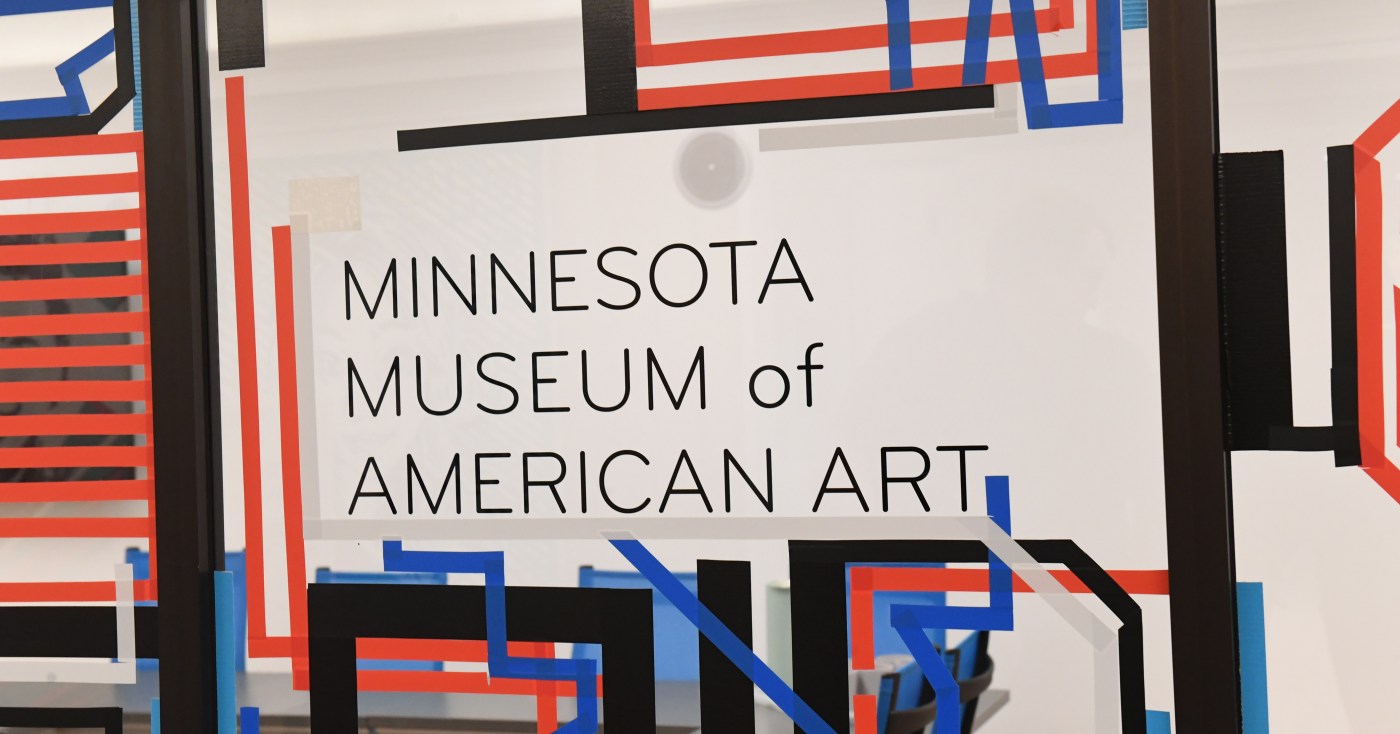
Minnesota Museum of American Art christens new wing, tripling gallery space
Years in the making, local art and artists are now showcased under a stunning stained-glass ceiling.
The new wing at the Minnesota Museum of American Art, also known as the M, opened Thursday in downtown St. Paul’s historic Pioneer Endicott Building. The wing took nearly 10 years and $14 million to complete and adds 6,531 square feet, tripling the museum’s gallery space, said Kylie Linh Hoang, the assistant curator of the M. The new wing displays the exhibition “Here Now: Selections from the M’s Collection.”
There will be an open house from 10 a.m. to 4 p.m. Saturday, Oct. 26, to officially celebrate the unveiling.
“This is what we are calling our permanent home,” Hoang said.
The M was founded at the St. Paul School of Fine Arts in 1894. It was formally incorporated in 1927 and collected art for instructional purposes.
The new wing at the Minnesota Museum of American Art, also known as the M, opened Thursday, Oct. 17, 2024 in St. Paul’s historic Pioneer Endicott Building, featuring the original Cass Gilbert-designed stained-glass tile ceiling, painstakingly restored. (Courtesy of the Minnesota Museum of American Art)
“The M has had seven different names and 13 different homes,” Hoang said.
It became the St. Paul Art Center in 1950 and then became the Minnesota Museum of Art in 1969. The museum added “American” to its name in 1992. The museum has existed downtown in the Jemne Building, the Landmark Center, the old West Publishing Co. building and, finally in 2012, the Pioneer Endicott Building.
The Pioneer Endicott Building — actually two adjoining buildings at Fourth and Robert streets — housed the offices of Cass Gilbert, the celebrated St. Paul architect of the Endicott Building and the designer of the Minnesota State Capitol as well as the U.S. Supreme Court Building. The L-shaped, Italianate-style Endicott Building, with an arcade of long-vacant shops on street level, wraps around the much taller Romanesque-style Pioneer Press Building, which once housed this newspaper and his since been converted into apartments and retail.
The new gallery space, which builds on an extensive 2018 expansion, allows the M to showcase its permanent collection, made up of approximately 5,000 pieces and counting, Hoang said. Many of the pieces have not been seen by the public for years.
“It gives us additional room to show American art and to honor American identities through creativity and art making,” Hoang said.
Art by local Native American artists is thoughtfully interspersed throughout the new exhibit of the museum’s collection. Many art museums do not do that, Hoang said.
The overarching theme of the exhibit is human connection, Hoang said. The connection to what varies from gallery to gallery in the former arcade level, which was lavishly detailed in exotic-colored marbles, stained glass and stone mosaic floor tile.
The new wing at the Minnesota Museum of American Art, also known as the M, opened Thursday, Oct. 17, 2024 in St. Paul’s historic Pioneer Endicott Building. The wing took nearly 10 years and $14 million dollars to build and adds 6,531 square feet, tripling the gallery space. (Courtesy of the Minnesota Museum of American Art)
In the first room of the new wing, the Gregory K. Page and Carole B. Howe Gallery, there are many portraits. This room is about the human connection to other people and the faces representing the M’s art.
The hallway to the left of that gallery are the Dr. John E. Larkin and Elizabeth and John Driscoll Arcade Galleries. The beginning of the area is about human connection to the cosmos. This area is where the stained-glass ceiling, designed by Gilbert and restored and revitalized for the new wing, starts to paint the artwork below in a warm light. There are terracotta depictions of zodiac signs by Paul Manship, and select works from other artists like Jeffery Chapman and Frank Big Bear Jr.
The North Arcade Gallery 2, the area just beyond the Elizabeth and Hon Driscoll Gallery, is about connection to land. There are many depictions of landscapes, ceramics and artworks that are made using natural tools. For example, Hazel Belvo painted the piece “Spirit Tree Meditations, Torso, Nokomis Grandmother” using tobacco.
At the end of the North Arcade Gallery and in the Target East Gallery are pieces depicting cityscapes. The art shows people existing in their homes and living spaces as well. This section is about connection to the places people live.
Nearing the end of the wing, the John and Ruth Huss Arcade Gallery houses a plethora of colorful and complex abstract pieces. This area is about connection to imagination and features artists like Joan Brown and Cameron Booth. Joan Mitchell’s “Strata” is in this section as well.
“Abstraction is special and important because it all comes from imagination,” Hoang said. “You can look at someone and paint a portrait of them, but this has to come from somewhere. It’s all coming from within.”
Finally, at the very end of the wing is the George Morrison Room. Morrison was a member of the Ojibwe tribe, and an influential abstract painter and sculptor from northeastern Minnesota.
On the first day of the opening, Hoang was pleasantly surprised by the number of museum visitors.
“I’ve walked through at least a couple times and seen a dozen people, so I’m excited,” Hoang said.
Minnesota Museum of American Art: 350 N. Robert St., St. Paul; 651-797-2571; mmaa.org
Related Articles
Your guide to the St. Paul Art Crawl this weekend
Artist killed in random Lowertown shooting was 66-year-old mother, grandmother, woman of faith
How a custom painting helped Vikings land former Gophers linebacker Blake Cashman
Tour seven new murals in St. Paul at annual Chroma Zone festival
Artwork and puzzle featuring Cottage Grove landmarks unveiled


